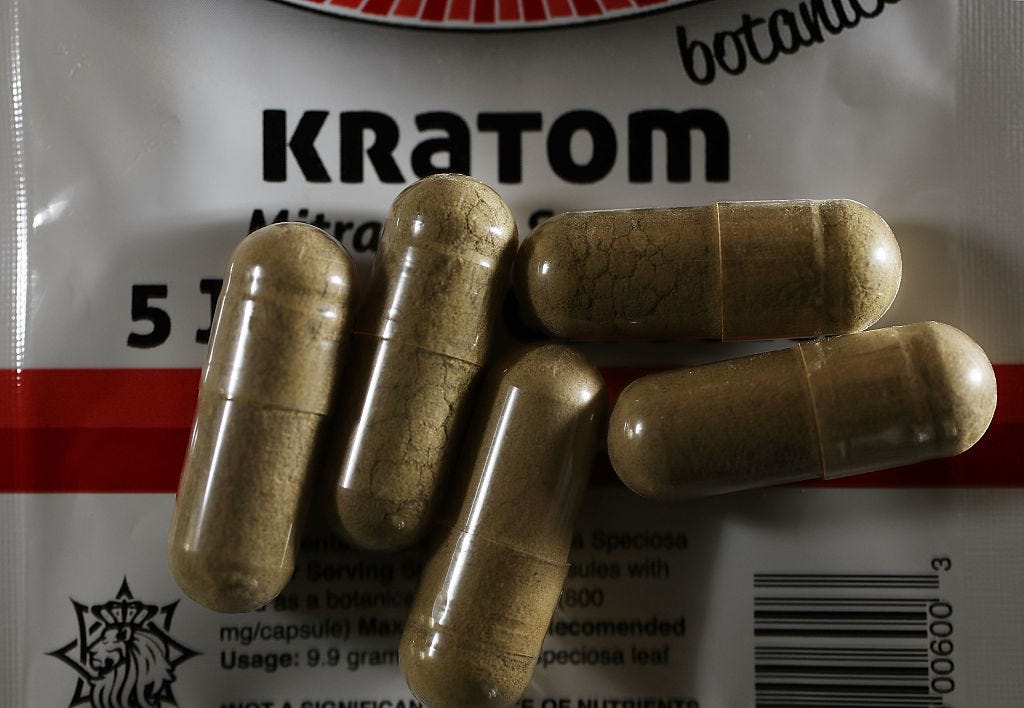RFK Jr. Seeks Kratom Ban With Deadly Consequences | Opinion

The Complex Debate Around Kratom and 7-Hydroxymitragynine
For centuries, people in Southeast Asia have used the leaves of Mitragyna speciosa, commonly known as kratom, to brew tea that offers relief from pain and anxiety. The primary compounds in kratom, mitragynine and the more potent 7-hydroxymitragynine (7-OH), interact with opioid receptors in the body. Today, kratom has gained popularity in the United States, often used as an alternative to prescription opioids or to manage withdrawal symptoms from drugs or alcohol. It is available in various forms such as tea, capsules, powders, and concentrated extracts. Recently, products containing 7-OH have become more accessible through vape shops, convenience stores, and online retailers.
Growing Pressure to Ban Kratom
The use of kratom has sparked increasing pressure to ban it. In July, FDA Commissioner Marty Makary and Health and Human Services Secretary Robert F. Kennedy Jr. announced plans to ask the Drug Enforcement Agency (DEA) to classify 7-OH as a Schedule I drug, similar to heroin. This move comes amid growing concerns about its potential for abuse and the risks associated with its use.
In mid-August, Florida implemented an emergency ban on kratom, while seven states have already outlawed it entirely. Other states have imposed age restrictions or labeling requirements. In 2016, the DEA attempted to classify kratom as a dangerous substance but reversed its decision after facing significant public backlash from medical professionals and researchers.
Risks and Realities of Kratom Use
Like other substances such as opioids, alcohol, cannabis, and nicotine, kratom can lead to dependency and withdrawal symptoms. The compound 7-OH, being more potent than kratom itself, has led some individuals to seek out semisynthetic versions at convenience stores, vaping shops, and online. Due to their opioid-like effects, both kratom and 7-OH can cause respiratory depression. However, overdoses involving these substances are rare, with kratom-related overdoses being even less common.
In most cases where coroners identified an overdose death linked to kratom or 7-OH, the victims had multiple other drugs in their systems. Nearly two-thirds of overdose victims had fentanyl in their systems, about one-third had heroin, and just under 20% had prescription opioids or cocaine. Additionally, about 80% of those who died had a history of substance misuse, and 90% were not receiving clinical care for pain management.
The Dangers of Criminalizing Kratom
When state governments ban kratom or 7-OH, individuals seeking these substances may cross state lines to access them. However, a federal ban would likely push kratom into the black market, making it more dangerous for users. Drug trafficking organizations, which already supply Americans with heroin, fentanyl, cocaine, methamphetamine, and marijuana, would likely take advantage of this opportunity to fill the void left by kratom's prohibition.
These cartels are well-equipped to produce and smuggle 7-OH, aiming to recoup lost market share in the marijuana trade. Expanding drug prohibition to include 7-OH would not stop people from using it; instead, it would make the use of these substances more hazardous.
Educating Users and Expanding Access to Harm Reduction
Driving 7-OH or kratom underground will not reduce the risks of using these drugs. Instead, the best approach is to educate people about the risks associated with their use and to expand access to harm reduction strategies and addiction treatment. For example, the opioid overdose antidote naloxone can reverse overdoses from kratom or 7-OH. In 2023, the FDA allowed over-the-counter access to the nasal spray version of naloxone, and it should also enable access to the cheaper injectable form, as done in Italy and Australia for years.
Lawmakers should also consider expanding access to methadone treatment for opioid or kratom addiction by allowing clinicians to treat patients in their offices and clinics. This model has been successfully implemented in countries like Australia, Canada, and the United Kingdom for over 50 years.
A Clear Choice: Regulation Over Prohibition
The choice is clear: either allow 7-OH to fall into the hands of drug cartels or regulate it to minimize harm. America does not need another fentanyl crisis, especially one that could be caused by our own actions. By taking a measured, informed approach, we can protect public health while addressing the complex realities of substance use.
Post a Comment for "RFK Jr. Seeks Kratom Ban With Deadly Consequences | Opinion"
Post a Comment